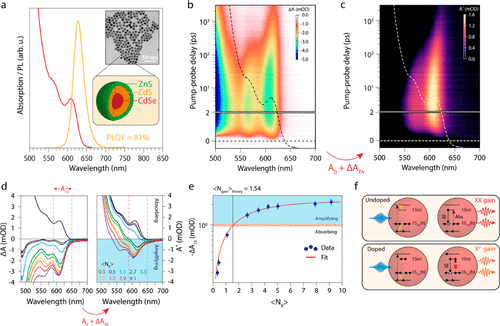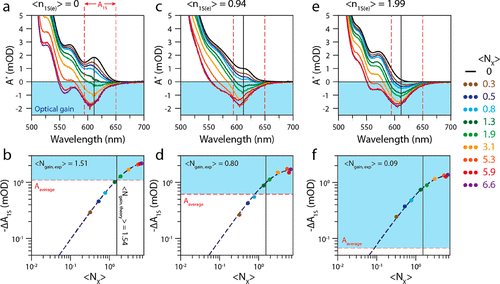Publication: Light amplification with nanocrystals made efficient with electrochemistry
The team of Prof. Arjan Houtepen has succeeded making light amplification with colloidal nanocrystals very efficient using electrochemical doping. The nanocrystals, so-called quantum-dots (QDs), are good light emitters: they can absorb a blue photon, and convert this with almost unity efficiency into a (in this case) red-photon, and are hence useful for, for example, new types of LEDs. This is a one-photon-in, one-photon out process. However, if you want to amplify light, there needs to be more light-emitted at specific frequencies than there is light absorbed. There has to be light amplification. This is the basic process of lasers (Light Amplification by Stimulated Emission of Radiation), in which light is strongly amplified.

Neutral quantum-dots, so without additional electrons, are not very efficient light-emitters. The reason for this is that most of the QDs have to be in their excited state already, before they will amplify light (the physics community calls this population inversion). The excited-state in these QDs is very short-lived (less than 300 ps), so you need to have an intense light-source with enough photons to kickstart this process: first there need to be photons to get enough QDs into their excited state, and secondly you need enough photons to stimulate the excited QDs to emit their excited energy as another photon (this last process is a one photon in, two photons out situation). This process, called stimulated emission, has to outcompete the absorption of the QDs.

This is where electrochemical doping comes into play. We can turn off the first absorption transition of the QDs, by populating the first empty electron state (the LUMO) with electrons. Now any photon that comes by can lead to stimulated emission, but this does not have to outcompete the absorption first: each photon will cause light amplification. We have demonstrated that this works very well on our QDs. We can controllably electrochemically charge and discharge films made from these QDs with electrons, and by doing so affect how efficient the light amplification process is. Next to this, we have modelled the processes that lead to light-amplification and can now use the model we developed to make predictions on how other materials should behave. We are currently collaborating with several groups to go from efficient light amplification, to electrochemical doped QD systems that show actual lasing, where the light is not only amplified, but also directional and coherent. The future for colloidal QD lasers seems very bright.
